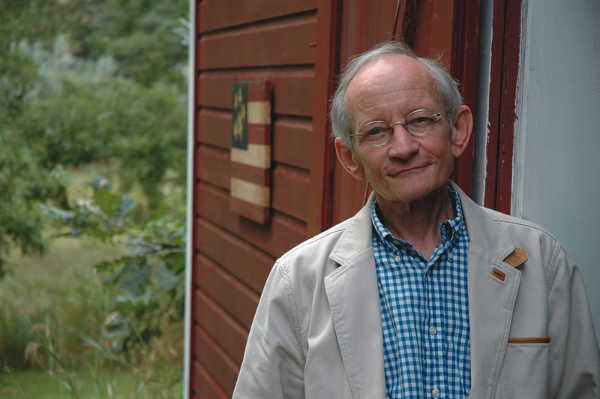- Ted Kooser
American Life in Poetry: What Makes a Pearl

All of us know people who wouldn't wear an article of clothing that had ever before been touched, let alone worn, by somebody else, and others who could care less.
As I write this column I'm wearing a favorite thrift shop sweater, so . . . This poem first appeared in Minnesota Review.
Emily Rose Cole is from Pennsylvania, and her most recent chapbook is “Love and a Loaded Gun” from Minerva Rising Press.
What Makes a Pearl
When she died, I took my mother's socks,
those fuzzy polka-dotted ones she'd worn
in hospice. I wore them all through winter.
Maybe that's creepy. But is it really so different
from the necklace she willed to me,
that single pearl clinging to its strand of silver?
The necklace isn't creepy. Every day for a year
I hung it over my heart, even in the shower,
even when it felt heavy as a beggar's first coin.
I want to say that having these things was like having a scar
but worse. In winter, socks are as inevitable as scars,
except there's more choice in it: when I was cold,
I chose which socks, and whose.
But I'm wrong. These tokens I harvested
from her deathbed are more like the pearl,
or rather, what makes a pearl:
that piece of sand, the irritant that the nacre
builds itself around, that tiny, everyday object
that, little by little, learns to glow.
American Life in Poetry does not accept unsolicited manuscripts. It is made possible by The Poetry Foundation, publisher of Poetry magazine. It is also supported by the Department of English at the University of Nebraska, Lincoln. Poem copyright ©2018 by Emily Rose Cole, "What Makes a Pearl," from the Minnesota Review, (No. 90, 2018). Poem reprinted by permission of Emily Rose Cole and the publisher. Introduction copyright @2019 by The Poetry Foundation. The introduction’s author, Ted Kooser, served as United States Poet Laureate Consultant in Poetry to the Library of Congress from 2004-2006.

 How to resolve AdBlock issue?
How to resolve AdBlock issue? 






